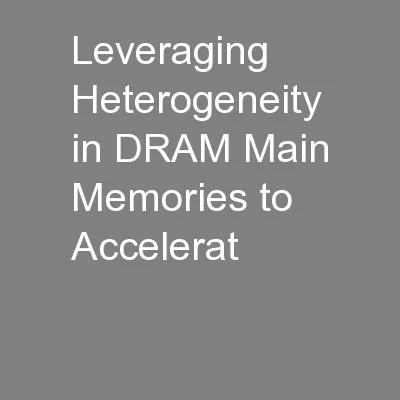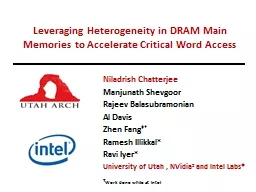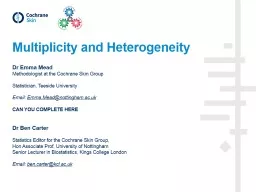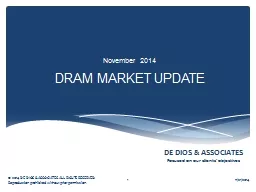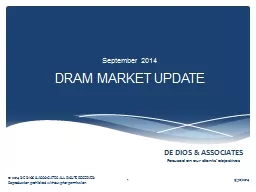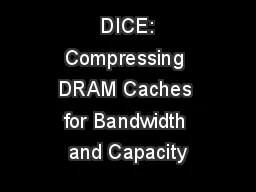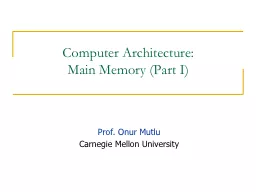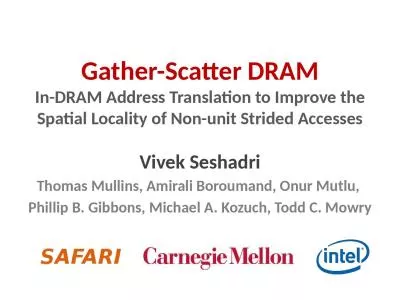PPT-Leveraging Heterogeneity in DRAM Main Memories to Accelerat
Author : tawny-fly | Published Date : 2016-10-31
Niladrish Chatterjee Manjunath Shevgoor Rajeev Balasubramonian Al Davis Zhen Fang Ramesh Illikkal Ravi Iyer University of Utah NVidia and Intel Labs
Presentation Embed Code
Download Presentation
Download Presentation The PPT/PDF document "Leveraging Heterogeneity in DRAM Main Me..." is the property of its rightful owner. Permission is granted to download and print the materials on this website for personal, non-commercial use only, and to display it on your personal computer provided you do not modify the materials and that you retain all copyright notices contained in the materials. By downloading content from our website, you accept the terms of this agreement.
Leveraging Heterogeneity in DRAM Main Memories to Accelerat: Transcript
Download Rules Of Document
"Leveraging Heterogeneity in DRAM Main Memories to Accelerat"The content belongs to its owner. You may download and print it for personal use, without modification, and keep all copyright notices. By downloading, you agree to these terms.
Related Documents

